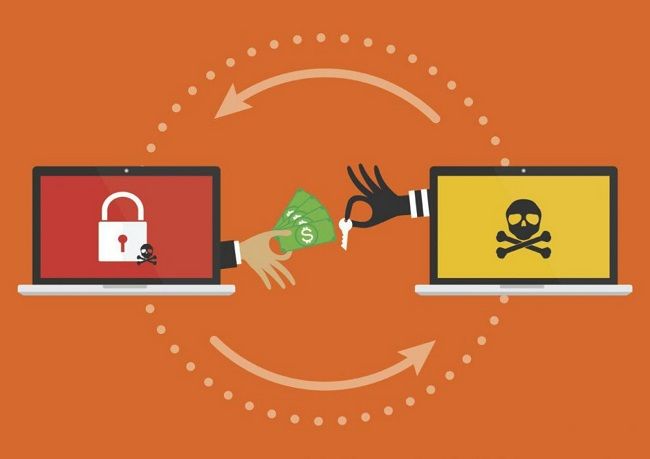What is Ransomware? And how to protect yourself from ransomware

What is Ransomware?
Define:
Ransomware is a type of malware, designed by bad guys to block access to your computer and the internet.
After being infected with ransomware, victims will receive a message "your files have been encrypted or have been disabled from the system, your access will be restored after you pay the ransom" and usually Transactions through several digital currencies to avoid tracking.
To speed up your payment process, ransomware attackers also leak some of your personal data, business data causing some significant losses.
Some of the main types of ransomware:
Crypto or Encryptors: is one of the most dangerous types of ransomware, it encrypts all files and data making it inaccessible to you without the decryption key.
Locker ransomware: completely block access to your computer or network by locking your screen, with a ransom demand and a countdown timer that speeds up your payment.
Scareware: is a form of ransomware that emits fake security messages to scare you, lure you into buying useless software or demand ransom to solve any problem.
Leaked software: an attacker will steal your confidential, sensitive files and data and make a public announcement if you don't pay a ransom for them.
How ransomware works.
There are many ways that ransomware can get into your computer and system, here are some of the most common:
Phishing (spam) email attacks:
It can be said that phishing emails (spam) are the most popular and effective means of ransomware attacks, somehow, they pretend to be a legitimate, reputable, trustworthy email user, to send you a spoofed email and try to trick you into opening links and downloading attachments so that it can hack and infect your device, thereby encrypting all your files and data.
Attacks in other ways:
Drive-by download: when you visit an infected website, the ransomware forces your browser to download and install some malicious code on your computer. Usually, the drive's download code is written in a way that allows the software to infect, so it's very easy to get hacked without you having to click the download link, instead the malware gets into the hole, your device or system to be able to exploit the information, files, and data on it.
Direct intrusion: similar to disk intrusion, ransomware will attack with some malicious code, taking advantage of vulnerabilities, your security and your business to bypass the security of the system, in order to let the malicious code be spread.
Remote computer attack: the attacker will issue a script that looks for some open computer port to the internet and they will send ransomware there after obtaining the login information.

Who is at risk of becoming a victim of ransomware.
Anyone can fall victim to ransomware, but above all the victims of ransomware are banks, companies, business owners, stores… these industries provide important services to people, making it become the main target of ransomware.
Eg:
-In May 2021: Gas company Colonial Pipeline paid nearly $5 million to ransomware criminals. (https://www.zdnet.com/article/colonial-pipeline-paid-close-to-5-million-in-ransomware-blackmail-payment/)
-November 2021: MediaMarkt, Europe's largest electronics retailer, suffered an attack with an initial ransom of $240 million. (https://www.bleepingcomputer.com/news/security/mediamarkt-hit-by-hive-ransomware-initial-240-million-ransom/)
To maximize and increase payment speed, ransomware mainly attacks companies and businesses with finance. To get back important data information, these companies do not want to disclose data breaches that seriously affect the privacy of companies and businesses, so they are forced to pay that ransom.

How to protect yourself from ransomware.
As with any malware threat, prevention and digital hygiene are important as it is the best way for you and your business to avoid a ransomware attack.
Data backup:
Back up your personal or business data regularly to protect it from a variety of disasters, including blackmail attacks, as ransomware often spreads through internet access systems, so Keeping backups offline can also help prevent your data from getting infected.
Install anti-virus and malware software:
Antivirus and malware software provide a good defense against ransomware attacks. This software will detect and isolate malicious code, preventing it from infecting your system.
Watch out for suspicious emails and use temporary mail:
Most ransomware attacks are via email. If you discover a suspicious email, it is best not to click on any links or attachments and immediately report the email to your email service provider.
Using temp mail is the best way to protect yourself against ransomware attacks, eliminate suspicious, spam messages, hide your presence on the web. Temporary messages are rarely attacked by ransomware because their lifespan is very short and limited.
Summary.
Arm yourself, businesses with more knowledge about ransomware and other malware. Aim to provide prevention and best prevention solutions.
Don't open messages from people you don't know and never click on links to attachments in them.
Temp email helps you avoid spam from malicious software.